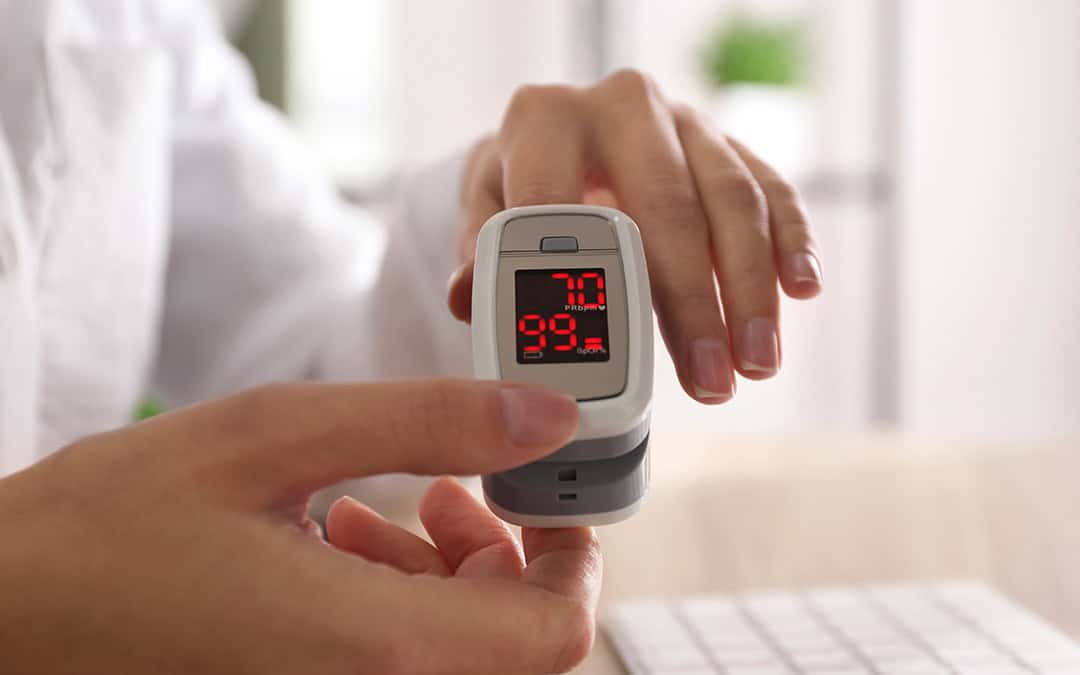Did you know that a healthy blood oxygen level is 75–100 mm Hg, or 95–100%? Blood oxygen level, abbreviated as SpO2, plays a crucial role in maintaining your health, longevity, and even your quality of life. However, if you’re not sure exactly what your blood oxygen level means, you’re far from alone. Sure, we may see it scrawled on our medical forms and as a reading on our apple watches, but what does it actually mean for our health? And more importantly, how can we ensure it remains at a healthy level? For this blog, we’re delving into these questions and exploring the significance of this vital sign, the conditions that may affect it, and best practices for keeping your blood oxygen level in the green zone.
Delving into the pulse oximeter reading
By definition, blood oxygen level refers to the amount of oxygen carried by red blood cells from the lungs to the rest of the body. It is typically measured as a percentage, and reflects the efficiency of oxygen transport in the bloodstream. So, if your pulse oximeter reading is between 95% and 100%, you know that you are in a healthy range. Levels below this can indicate hypoxemia (low oxygen levels in the blood), which can lead to various health complications if left untreated.
Several factors can influence blood oxygen levels, including respiratory function, heart health, altitude, and certain medical conditions. Chronic respiratory conditions such as chronic obstructive pulmonary disease (COPD), asthma, and pneumonia can impair the lungs’ ability to oxygenate the blood properly, resulting in decreased blood oxygen levels. Similarly, cardiovascular disorders such as heart failure and pulmonary hypertension can affect the heart’s ability to pump oxygen-rich blood to the body, leading to decreased oxygen saturation.
Symptoms of low blood oxygen levels

There are certain symptoms you may notice if you’re experiencing low blood oxygen levels. A recent Healthline article outlines these in detail: “When your blood oxygen level goes below 95%, you’re at risk of hypoxemia. You may experience… shortness of breath, chest pain, coughing or wheezing, confusion, headache, or rapid heartbeat.” It goes on to explain that symptoms worsen when one’s blood oxygen drops to below 80-85%, possibly causing visual and cognitive impairment.
Who should monitor their blood oxygen levels?
Not everyone needs to track their blood oxygen. Most children and adults maintain healthy levels everyday without intervention.
However, monitoring blood oxygen levels is essential for individuals with respiratory or cardiovascular conditions, as well as those at risk of developing hypoxemia. This is one of the reasons that portable pulse oximeters have become increasingly common, giving at-risk patients a non-invasive and convenient means to receive real-time feedback on oxygen saturation levels. Regular monitoring allows patients to track changes in oxygen levels and adjust their treatment accordingly.
Best practices for staying healthy

While certain medical conditions may predispose individuals to low oxygen levels, there are several lifestyle factors that can help keep your blood oxygen levels optimal:
- Regular Exercise: Aerobic exercises such as walking, swimming, and cycling are effective in enhancing oxygen uptake.
- Healthy Diet: Eating a balanced diet rich in fruits, vegetables, lean proteins, and whole grains provides the essential nutrients that promote respiratory health.
- Hydration: Drinking plenty of water throughout the day helps prevent dehydration and ensures efficient oxygenation of tissues.
- Avoiding Smoking: Smoking damages the lungs and impairs oxygen exchange, increasing the risk of respiratory conditions and hypoxemia.
- Managing Stress: Practicing relaxation techniques such as deep breathing, meditation, and yoga can help reduce stress levels and improve oxygen delivery to tissues.
Takeaway
Practitioners are learning more about oxygenation and how to provide at-risk individuals with resources for a more fulfilling life every day. We’re proud to be a part of this at CalOx, a trusted, California-based provider of medical oxygen for more than 80 years.
If you’re looking for a partner in the medical- and food-grade gasses industry that you can rely on, contact us today!
